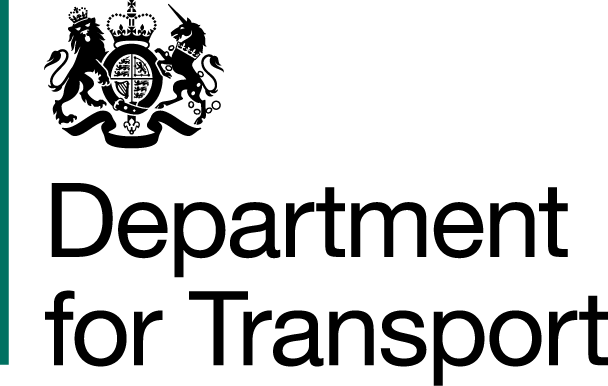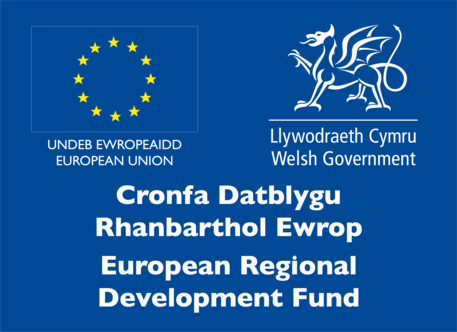Gender Pay Gap Report 2020
Foreword
Lisa Yates
People and Organisational Development Director
Transport for Wales supports the fair treatment and reward of all our employees irrespective of gender. We are also committed to being a leader on diversity and inclusion in the public sector in Wales.
TfW exists to create a safe, sustainable, resilient, and effective transport network that the people of Wales are proud of. We’re key to delivering the Welsh Government’s key themes as set out in Prosperity for All: The National Strategy, by developing a continuously improving experience – placing the customer at the heart of what we do.
At TfW we recognise that our people are our greatest asset and for Wales and its people to thrive, we need to be connected – to one another. It’s imperative that we deliver trusted expert advice through leading, innovating and collaborating to build an organisation and partnerships capable of delivering our purpose.
The transport sector is a very male dominated environment – only 15% of the UK rail workforce are women. Ensuring that our rail service has a workforce that reflects Wales in the 21st Century is an ambition of the Welsh Government and shared by us all at TfW. We’re therefore working towards this to ensure that opportunities are made available to as wide a range of people as possible and that we take positive steps to encourage working practices which will attract those who do not currently choose to work in the transport sector.
We’re actively involved in the Transport Diversity Working Group, working through our social partnership structures in Wales to look carefully at what we can do to encourage more flexible working and to generally think differently about how we recruit, retain and invest in staff on the network. This will allow us as an industry to better reflect the communities we serve.
We recognised through the Performance Pay Model analysis that proportionately females tended to be under the 100% target of their pay range compared to males. We have subsequently introduced a new system of pay and performance and early results show the pay gap is getting smaller.
Reducing our gender pay gap will take time. However, I’m confident that over time we’ll reduce our gender pay gap by encouraging more women to realise their potential in the workforce at TfW. By focussing on the support of our male colleagues to support initiatives such as Menopause and Shared Parental Leave we will ensure that TfW is a great place to work for everyone.
The gender pay gap
In April 2017, the UK Government introduced legislation that made it statutory for organisations with 250 or more employees to report annually on their Gender Pay Gap (GPG) including:
» mean and median gender pay gaps.
» mean and median gender bonus gaps.
» proportion of men and women who received bonuses.
» and proportions of male and female employees in each pay quartile.
Mean
The mean gender pay gap demonstrates the difference in the average hourly rate of pay between males and females.
Median
If our employees lined up in order of highest to lowest pay with females in one line and males in another, the median would be the person’s hourly rate in the middle of each line. The median gender pay gap demonstrates the difference between the middle-paid man and the middlepaid woman.
If a workforce has a particularly high gender pay gap, this can indicate there may be a few challenges, and the individual calculations may help to identify those issues.
Equal Pay
The gender pay gap is different to equal pay. Equal pay deals with the pay differences between men and women who carry out the same jobs, similar jobs, or work of equal value.
It’s unlawful to pay people unequally because they are a man or a woman.
Our diversity
Gender ratio
40% female, 60% male
Pay quartiles
Proportion of male and female employees in quartile bands.
Image: A graph showing four quartilles of pay.
Top Quartille - 72% Male, 28% Female
Upper Middle Quartille: 68% Male, 32% Female
Lower Middle Quartille: 50% Male, 50% Female
Bottom Quartille: 49% Male, 51% Female
Our employees have been divided into four evenly sized groups, with pay ranked from lowest to highest. Our under-representation of women in the higher paid roles is evident in the lower proportion of women in the top and upper middle quartiles.
Median gender pay gap in hourly pay
Between January and March 2020 our headcount increased to 305 from 136 in December. This increase included 104 catering colleagues transferring from the private sector into TfW with the majority of senior and middle management roles being occupied by male colleagues.
The GPG has been significantly impacted by this transfer and the overall increase in headcount as proportionately we’ve had a 59% increase in male headcount compared to 41% in female headcount.
Image: Graph showing Median £17.44 difference in hourly rate - £7.24, Female - £10.20, Male £17.44.
Median gender pay gap as a percentage of men’s pay 41.5%.
Mean gender pay gap in hourly pay
The mean gender pay gap encapsulates the overall pay of men and women but can be skewed by a small number of high or low earners.
The average male hourly rate has been impacted by a small number of specialist fixed term roles required for short term schemes within TfW.
Image: Graph showing the Mean £21.02 difference in hourly rate £4.69, Female - £16.33, Male - £21.02
Mean gender pay gap as a percentage of men’s pay 22.3%
The mean gender pay gap encapsulates the overall pay of men and women but can be skewed by a small number of high or low earners.
The average male hourly rate has been impacted by a small number of specialist fixed term roles required for short term schemes within TfW.
Bonus pay
Female - 13.7% of females were paid a bonus
Male - 18.6% of males were paid a bonus
The mean bonus gender pay gap is 21.1%.
The median bonus gender pay gap is 2.6%.
Figures are based on commission earned by eligible roles within our catering team from the date of transfer (05 January 2020) to the snapshot date.
Commission earned for part time roles is likely to be less than that of a full time equivalent due to a fewer number of hours being worked per week.
63.6% of eligible part time colleagues are female, potentially affecting their opportunity to earn commission.
Recruitment
In 2018 there were 63 recruits, 23 of which were female.
36.5%
In 2019 there were 115 recruits, 43 of which were female.
37.4%
The year on year uplift is a small yet positive indicator. Our future actions are focused on the roll-out of the commitments defined in our Equality and Diversity objectives. They highlight 4 key focus areas which will enable us to work towards making TfW an inclusive employer of choice.
Our ambition to increase female recruitment is reflected in our second equality objective to improve female representation within the transport sector. As part of this, we’ll increase flexibility within recruitment from the perspective of attracting females through working with external networks such as Chwarae Teg and increasing the opportunity for flexible working and part time working arrangements.
What we’re doing to address the gap
Everyone matters
Our ambition is to be one of Wales’ most inclusive employers where difference is valued, people are able to be their best and collaboration is fostered to benefit ourselves, our customers and our communities.
The four areas of focus of our equality objectives are aligned to demonstrate our commitment to achieving this.
Image: Depicting four areas of focus - Recruitment and retention, Key organisational policies, Representation, Leadership leading to a key focus area - Equality, diversity and inclusion.
We’re optimistic that the introduction of our pay and performance system will assist in closing the gender pay gap and provide transparency.
The implementation of this new structure is supported by a bespoke Job Evaluation approach, a clear job analysis and design process which supports the allocation of roles to a job levelling grid.
Our new pay model will ensure that in the future the only differences in pay are based on contribution and performance, however, we appreciate that this will take some time to positively impact our GPG figures. Equally as we launch our equality objectives, we’re working hard to ensure that there are equal opportunities for all employees.
Conclusion
We’re committed to being a leader on equality, diversity and inclusion, through improving the recruitment, retention, progression, development and experience of our people. It’s our ambition to be recognised as an inclusive employer of choice.
The information within this report was gathered in April 2020 and took into consideration data for Transport for Wales on the public sector snapshot date of 31 March 2020. The figures shown above were calculated using guidance issued by the UK Government in relation to the Equality Act.
In 2019, 36.5% of our recruits were female, this figure has risen to 37.4% in 2020. Whilst this is a positive indicator, the female to male ratio has slightly decreased by 1% to 40% in 2020. We’re striving to improve these figures with an ambition to achieve gender balance.
One regulation of the Welsh Government is that public sector listed bodies such as TfW must prepare and publish equality objectives every four years. We’ve recently published our first set of objectives and in order to ensure we fully represent the views of all our colleagues, we involved colleagues who share one or more of the protected characteristics and have an interest in the way that we operate.
We’re exploring how we can improve Black, Asian and Minority Ethnic, female, LGBT+ and disabled representation within the transport sector. We’re increasing opportunities for flexible and part time working arrangements, engaging in outreach programmes in hard to reach communities, seeking external review and challenge of our actions as an employer and reviewing the equality impact of our policies in key areas.
Through the setting of our Equality, Diversity and Inclusion objectives, the dedication of our staff and the continued commitment and encouragement of our Senior Leadership Team and board, we hope to make progress and continue to address and reduce the gender balance and pay gap of our workforce into 2021 and beyond.
Being actively involved in the Transport Diversity Working Group allows us as an industry to better reflect the communities we serve, working towards the shared ambition of the Welsh Government in ensuring that our rail service has a workforce that reflects Wales in the 21st century.
Some of the images used throughout this document feature colleagues from our partners.



